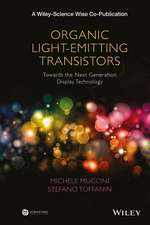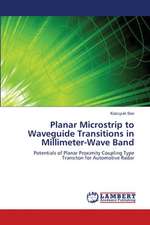Spectrum Sensing Techniques: Comparative Analysis
Autor Rehman Atti Ur, Muhammad Asifen Limba Engleză Paperback – 22 mar 2013
Preț: 231.93 lei
Nou
Puncte Express: 348
Preț estimativ în valută:
44.42€ • 45.76$ • 37.21£
44.42€ • 45.76$ • 37.21£
Carte tipărită la comandă
Livrare economică 24 februarie-10 martie
Preluare comenzi: 021 569.72.76
Specificații
ISBN-13: 9783659358517
ISBN-10: 3659358517
Pagini: 68
Dimensiuni: 152 x 229 x 4 mm
Greutate: 0.11 kg
Editura: LAP Lambert Academic Publishing AG & Co. KG
Colecția LAP Lambert Academic Publishing
ISBN-10: 3659358517
Pagini: 68
Dimensiuni: 152 x 229 x 4 mm
Greutate: 0.11 kg
Editura: LAP Lambert Academic Publishing AG & Co. KG
Colecția LAP Lambert Academic Publishing
Notă biografică
Atti Ur Rehman received the MS. Electrical Engineering with emphasis on Radio Communication degree from Blekinge Institute of Technology Sweden. He completed BS. Electronics Engineering from COMSATS Pakistan. His current research interests are Cognitive Radio, Cooperative MIMO communication, Optical communication and Passive Optical Networks (PON).








